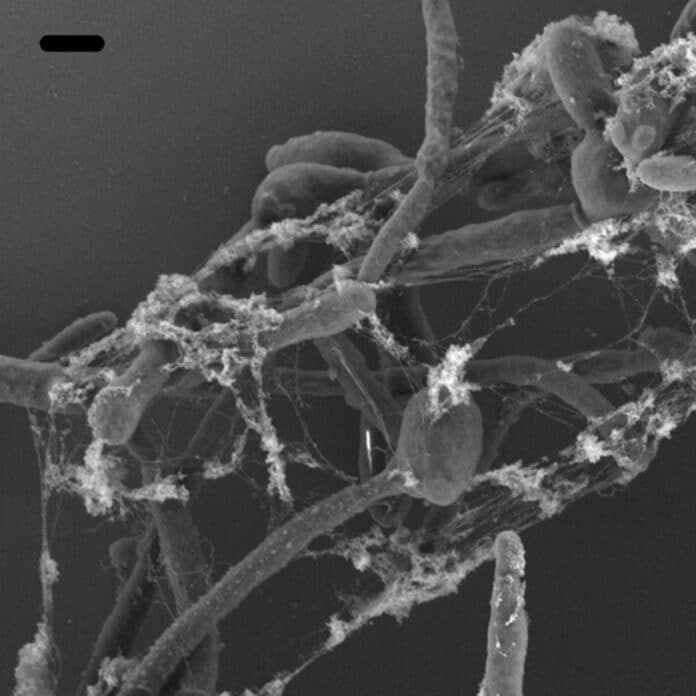Neutrophils are important innate immune cells that play a crucial role in preventing fungal infections. C. albicans is the most frequent human fungal pathogen and a common cause of invasive candidiasis, possibly resulting in sepsis. As pathogenic fungi can grow as a network of filamentous hyphae, phagocytic killing by neutrophils is often insufficient; thus, extracellular mechanisms, such as NET formation, are required for efficient eradication.
A new study by Umeå University shed light on how neutrophils respond to C. albicans hyphae, which release a peptide toxin called candidalysin. The study has revealed the clever defense of white blood cells.
According to scientists, Neutrophil extracellular traps (NETs) were released due to cellular pathways that neutrophils activated. These chromatin fibers are potent antagonists of hyphae. Large concentrations of sticky and antibacterial proteins inside the structures enable NETs to catch and suppress the fungus. NET proteins effectively bind microorganisms, such as fungus cells, due to their sticky nature. The accompanying antimicrobial NET proteins subsequently attack the entangled fungus.
Constantin Urban, Professor of Immunology at the Department of Clinical Microbiology at Umeå University, said, “We were amazed to see that neutrophils remained functional in the presence of candidalysin for such a long time.”
“We found that when exposed to the toxin of the fungal pathogen, neutrophils trigger processes to release a chromatin meshwork which entangles and restrains Candida albicans hyphae.”
When scientists infected neutrophils with engineered strains of C. albicans lacking candidalysin, the NET formation was virtually absent. It’s interesting to note that candidalysin by itself was insufficient to cause NET formation. Only the combination of candidalysin exposure to and pattern recognition of C. albicans cells by neutrophils resulted in the release of fibrous NETs. In contrast, it caused a more compact, less fibrous chromatin meshwork, or so-called NET-like structures, to be released by neutrophils.
The research reveals that candidalysin primarily induces calcium-dependent activation of chromatin, which is a first stage in the release of extracellular DNA structures. Calcium ions can enter the cells to begin these activation processes through impacts on neutrophil membranes. Neutrophil receptor molecules that recognize fungal cells cause kinase to be activated and antimicrobial oxidants to be produced. Large amounts of NETs are finally released as a result of a combination of calcium influx, kinase activation, and oxidant generation.
The study was done with engaged international collaborators in Gothenburg in Sweden, Bristol and London in the United Kingdom, and Jena and Berlin in Germany.
Journal Reference:
- Unger, L. et al.: Candida albicans induces neutrophil extracellular traps and leucotoxic hypercitrullination via candidalysin. EMBO Reports (2023)e57571. DOI: 10.15252/embr.202357571
